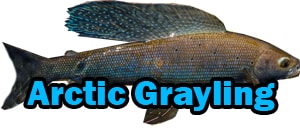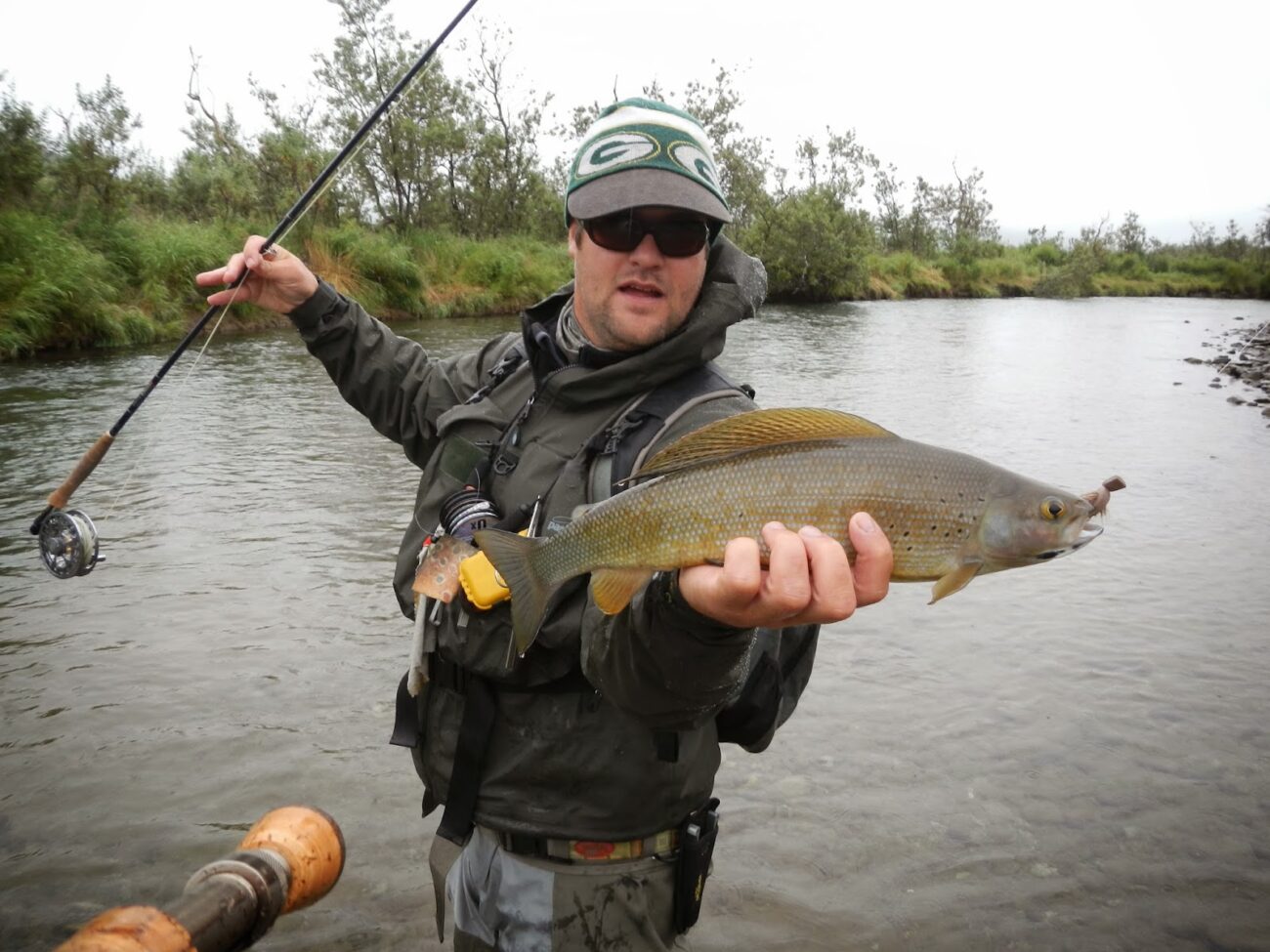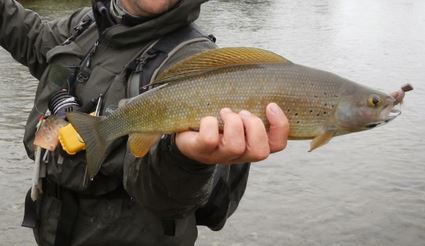This post was last updated on July 24th, 2021 at 08:02 am
Colorful and Wide-Ranging: The Arctic Grayling
 However not a trout species I thought it would be good to cover this beautiful fish.
However not a trout species I thought it would be good to cover this beautiful fish.
A gorgeous fish with wide-reaching habitats and long lives, the Arctic grayling is a wonderful angling fish. You can find them in many different areas, and the name Arctic grayling may refer to several different species and subspecies of fish. However, they are very easily identifiable from almost any other fish that they are found with. Here we will discuss the identification, habitat, endangered status, fly fishing opportunities, and more right here.
Arctic Grayling Facts
How to Identify Arctic Grayling
The Arctic grayling is very easy to identify because of their large, sail-shaped dorsal fin. They can range in color from sandy brown to nearly black, with or without very colorful markings. Even from stream to stream, these fish can appear to have entirely different coloration and marks. You can find them with spots that range in color from black to purple, blue, red, and more. Because of their various coloration, the Artic grayling are truly a beautiful fish. Despite these gorgeous colors, their adipose, anal, pectoral, and tail fins do not usually sport very much color at all. The iris of these fish also usually appears as a striking golden color, which also makes them easily identifiable.

Habitat
Arctic grayling’s have a very wide habitat area. They can be found from a few of the lower 48 states, to Canada and Alaska. These fish usually prefer very cool waters, and may be found everywhere from streams and rivers to lakes. They may live and spawn in the same area, or move to other water for spawning purposes. Usually, you will find them in larger lakes and they will migrate to streams with rocky beds in order to spawn. Because their diet is so varied, including small aquatic insects and other fish, these fish can survive on nearly any diet.
Range
As mentioned before, you can find these fish in several areas. The grayling’s range includes parts of the Lower United States, Canada and Alaska. All of these fish populations outside the lower 48 states (especially Montana) are not considered endangered, and have large populations. In some places where the Artic grayling has been found historically, pollution and logging has led to its decline. However, it is still found in large enough numbers to not be considered threatened. It is important, however, to control pollution in the areas where this fish is still found so that the decline will not reach further.
Size
These fish can reach lengths of up to around 20 inches, and the largest Artic grayling was recorded at a weight of around 5.15 pounds. Mostly, these are very large examples of the fish. Typically, these fish, when mature, will be around 1-3 pounds or so. They mature around the age of 3 years, but can live for up to 32 years in the wild, which is exceptional. Because they are so easy to maintain, and can reach decent sizes, these fish have been stocked in some areas to allow sport fishing, although fishing is not allowed in parts of Montana.
Different Subspecies
The name Arctic grayling applies to up to 5 subspecies found in the same habitat areas. Such a vast array of genetics is one of the reasons why coloration varies so very much. None of these species are listed on the endangered lists, and can all occur in the same habitat areas, along with other fish they have evolved with. None of these species take very well to polluted waters, nor do they do very well with introduced species. Even without being endangered, habitat destruction through pollution and human expansion is still a concern.
Endangered Status
As mentioned before, although most of these species are not considered endangered, they are listed as endangered in parts of Montana. In these areas, fishing may not be allowed. This decision has been hotly debated among even conservationists. Some said that the grayling populations in Missouri did not warrant protection since so many can be found in Alaska. It is thought that, largely, along with habitat destruction by humans, introduced species are most likely the main reason for the decline of this fish population in Montana. These fish were also once a well spread in Michigan trout streams, read about their extirpation here.
How to Catch Arctic Grayling
Mostly, fishing for this species in areas of Canada and Alaska is allowed. Some lakes and streams have been stocked with this fish to allow for sports fishing. Grand Teton and Yellowstone National Parks also have viable fishing populations in isolated areas. In Alaska, this fish is found nearly everywhere in the state, and can be fished for anywhere they are found. Since these fish are very distinctive in appearance because of the shape of their dorsal fin, they are not easily mistaken for other species that might be found in the same areas. If in doubt about whether you can fish for this species in your area, please contact local wildlife management experts.
The Grayling is always eager to take a well presented (or not so well) trout fly. They love all types of dry flies and are particularly fond of bright colored and shiny nymphs. All in all, fishing for Arctic Garyling can be a very successful opportunity.
In this video you can learn about some of the techniques used in fishing for arctic grayling. Video created by Alaska Dept. of Fish and Game.
More About the Arctic Grayling
Arctic Grayling FAQ
Is Arctic Grayling Good Eating?
Arctic Grayling can be very tasty. We find sizes in the 10″ range to be the best.

